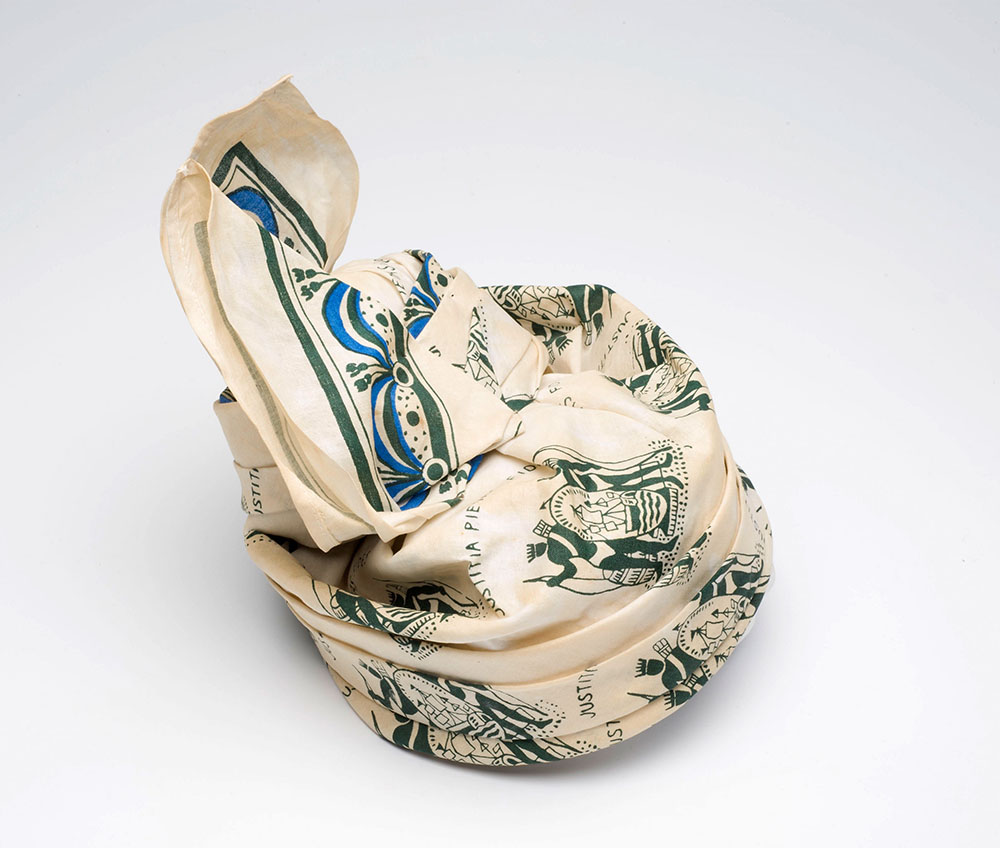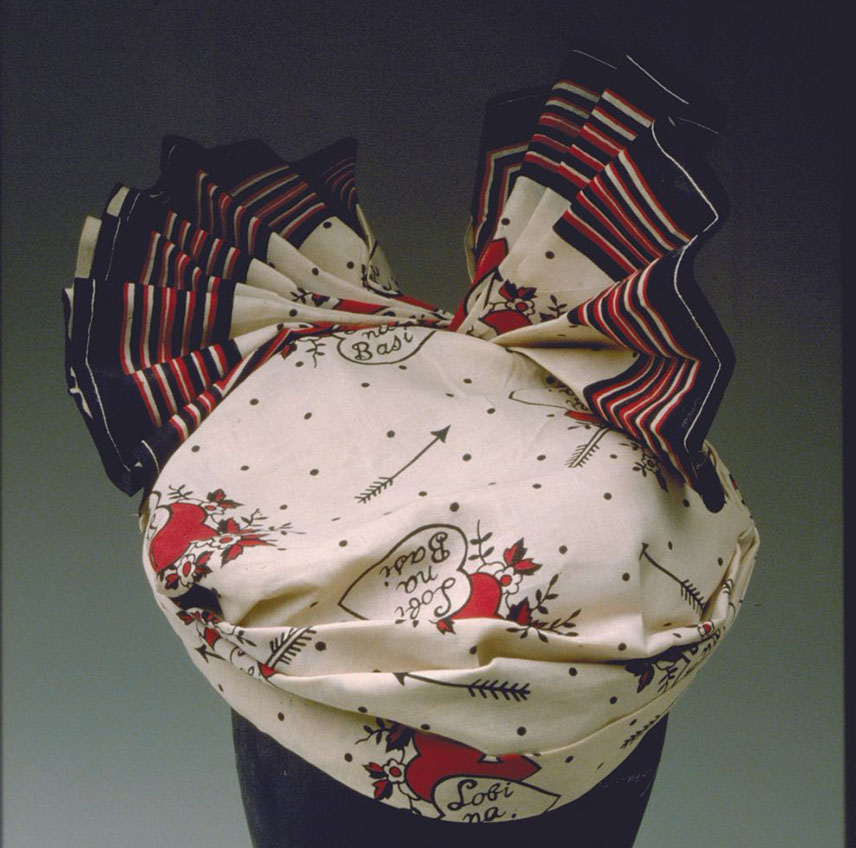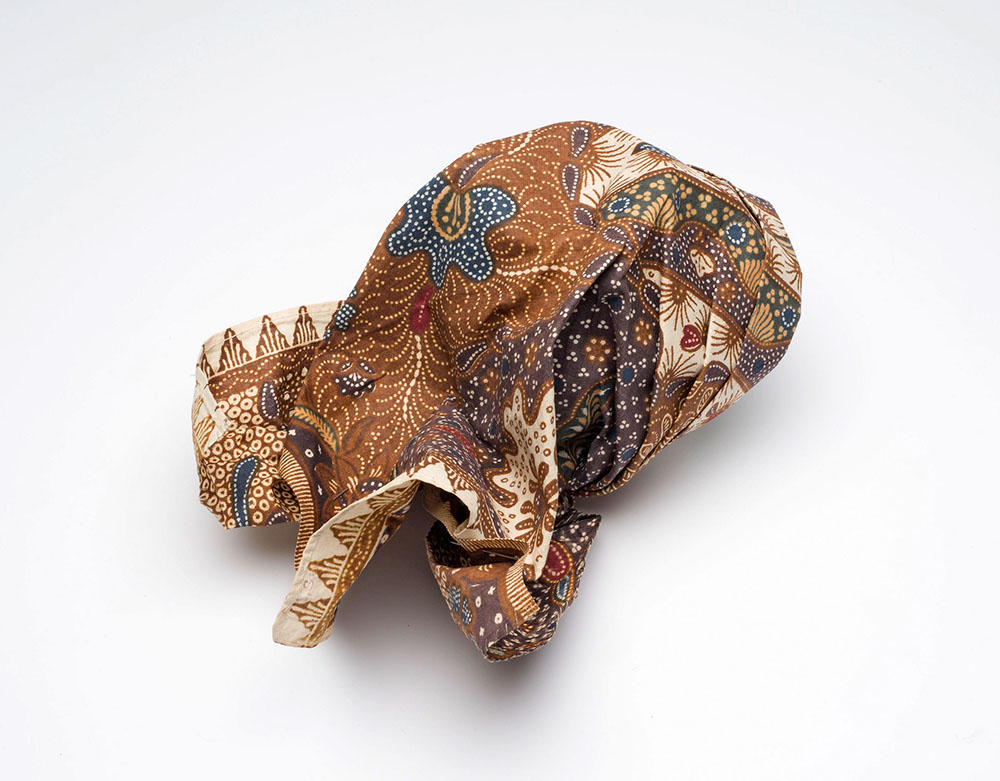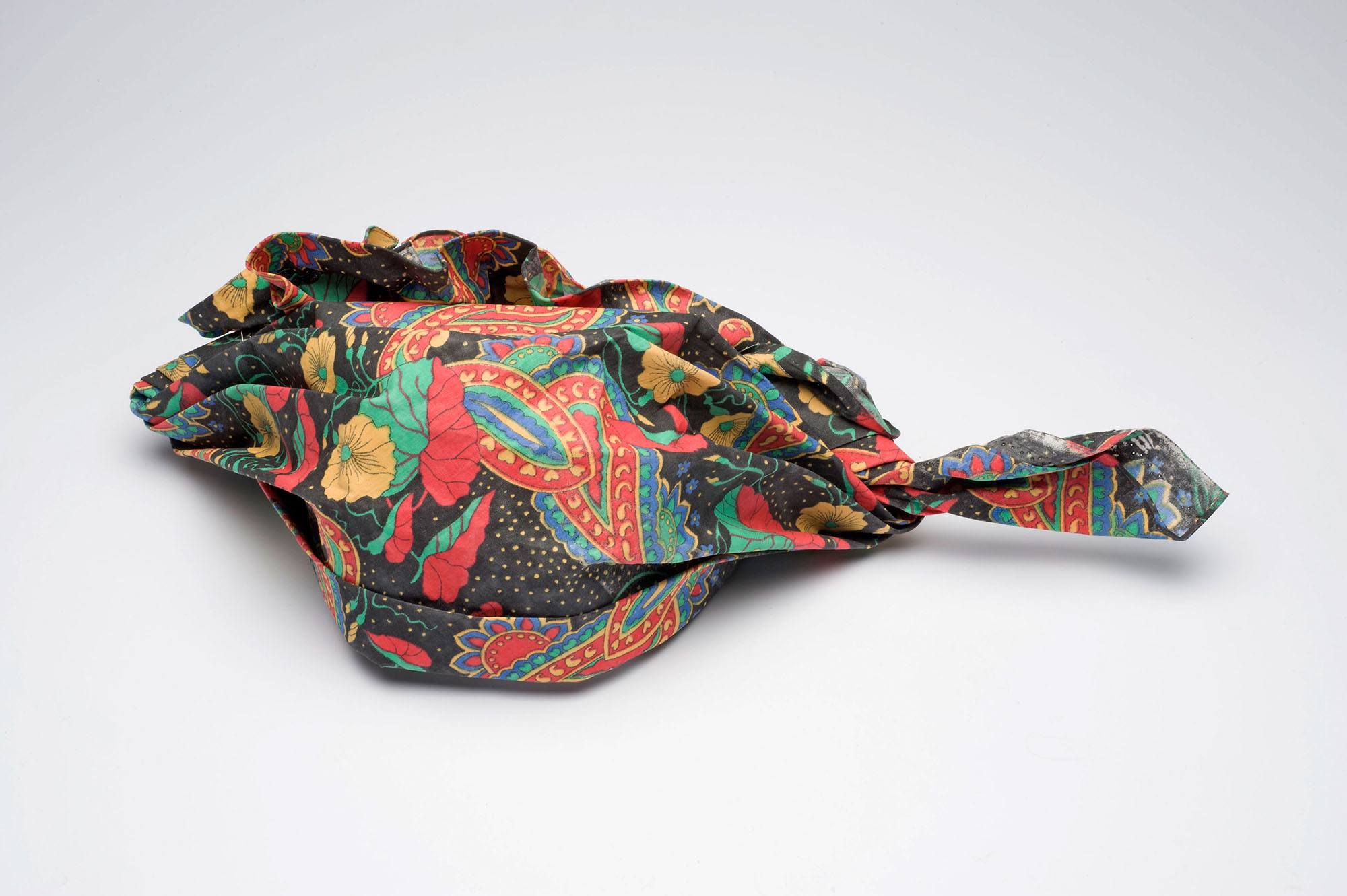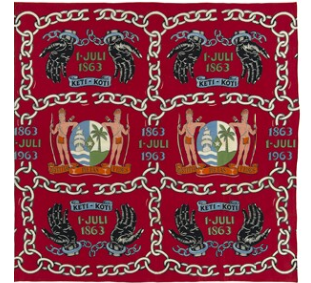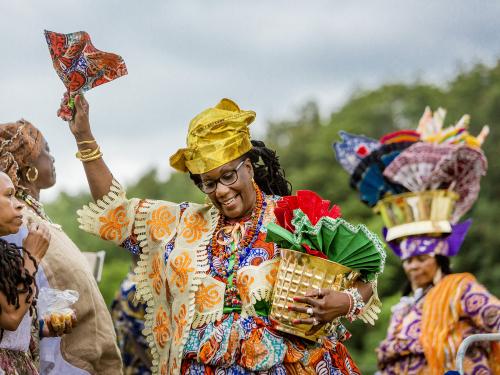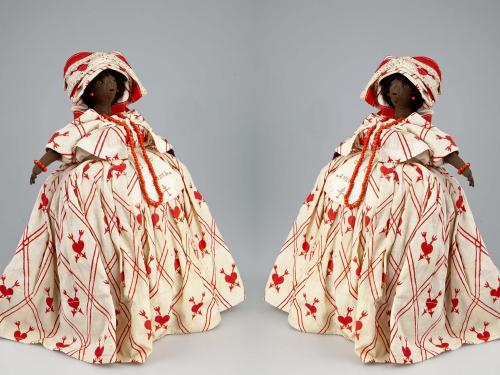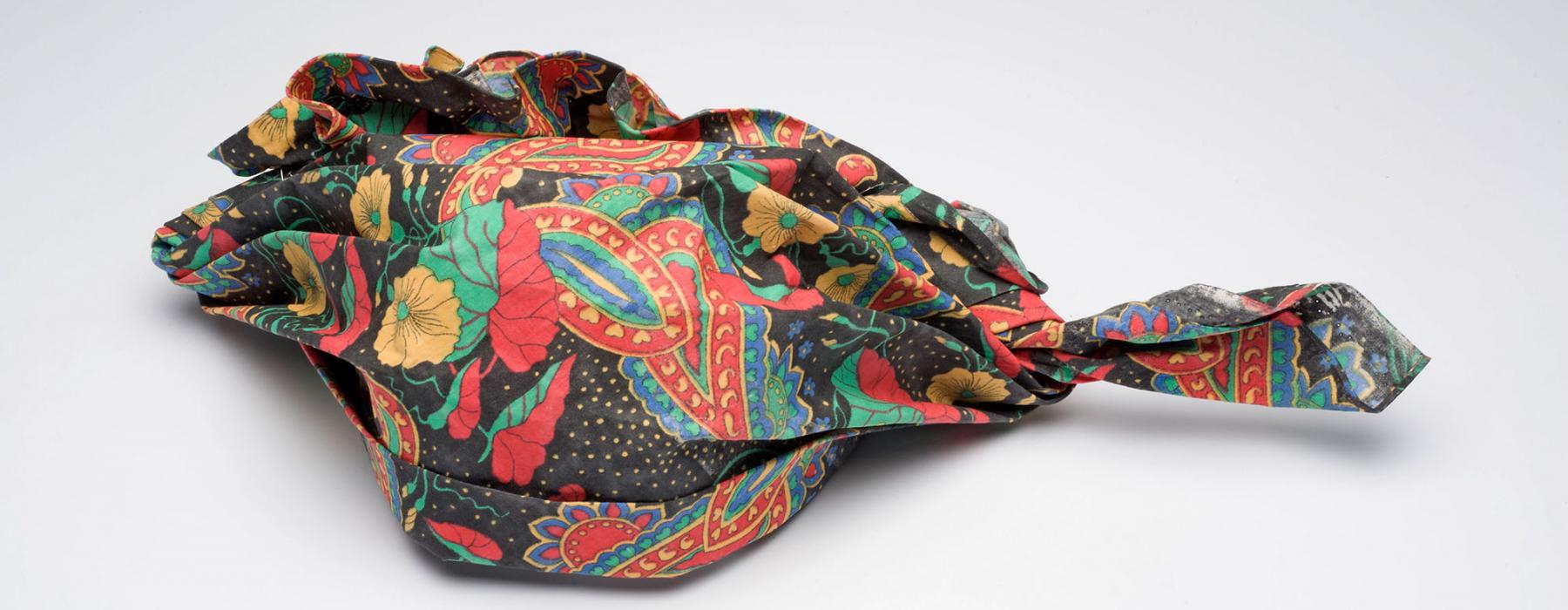
The pattern and sometimes the name of the angisa play a role in the ‘message’ they convey. Folding these headscarves is a special art. That knowledge is still passed on by word of mouth in numerous workshops and there are initiatives to document this knowledge.
The different ways of folding have been and still are inspired by all kinds of things. There is the low ede, which is worn during mourning. It’s a sober headscarf, often white, with the ends tied together at the front. At the beginning of the twentieth century cars appeared on the scene, an inspiration for the oto-baka style, an angisa that is very wide at the back. Trobi (trouble, quarrel) styles, with which women showed their displeasure, are intriguing. One angisa, with the ends firmly pointing upwards, goes so far as to mean drop dead. Nowadays these angry angisas are worn more out of respect for the past than out of anger. The friendlier Paw-tere is based on a peacock’s tail and has a soft, downward point.
